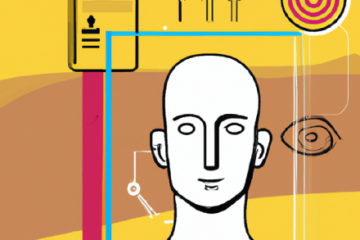Maurice FitzGerald: The One Problem we Need to Solve
VOICE OF EXPERTS
The One Problem we Need to Solve
Maurice FitzGerald, is VP Customer Experience HP and HPE Software (rtd.) author, founder Maurice FitzGerald Consulting, Editor in Chief – Content – OCX Cognition Inc. Maurice is the author of Net Promoter – Implement the System, and two other books on customer strategy.
It’s all too common that companies don’t do much with the CX data they have. If they’ve given thought to the core problem, most people would chalk it up to an insufficient commitment to customers by their companies. While that’s an issue, I don’t believe it is the root cause.
I want to take a radical position here. The single biggest problem we need to solve is a data problem. Please allow me to break it down into its components, using B2B relationship surveys as my example:
- Surveys cover a fraction of your customers. What are the rest thinking?
- Relationship surveys are usually done once a year. What are your customers thinking in between?
- We tend to get more responses from our largest customers, biasing the results.
- For large and complex customers, each individual person we survey has incomplete knowledge of what is going on. Are we covering the whole customer journey?
Now I don’t want to disrespect relationship surveys. A lot of companies do them extremely well and the results for those companies do indeed reflect what the customers were feeling at the time of the surveys. Of course, any NPS Detractors may already have decided to leave you by the time you survey them.
That’s the problem. What’s the solution?
So, what can we do? Up to a few years ago, there really was no satisfactory answer. Now there is, and that answer is… get more data. Far more data. In reality, you already have all of the data I am referring to but are simply not using it to predict customer sentiment and loyalty. Let’s think of this in terms of the customer journey. Here is an example that is representative of the world of B2B SaaS companies:

Your customers are handled by different teams at each stage of their journey. Each team has its own systems. Each of these systems holds customer experience data that you are not using to predict retention today. You need to use it.
That is of course easy to say, and a bit harder to put into practice. This is where we jump into the world of predictive CX analytics, using artificial intelligence. It’s an incredible way to synthesize a vast amount of data into always-on, continuously updated analytics on every single account. One of our B2B SaaS customers is now doing this using about 2,000 data points for each customer across their various operational systems, to gain daily insights connected to the metrics they already use.
What exactly do we mean by ‘predictive CX analytics?
The method should be quite easy to understand. If you have a good relationship survey, you can combine it with your operational data for the same customers to create training data for an AI. The AI then uses the operational data for all of your non-responding customers to predict their NPS status and the operational drivers that most affect that status. This means you get 100% customer coverage, making it much easier to justify improvement work and to predict retention. An additional benefit of using operational data is that you speak to your individual businesses and functions in a language they understand, rather than in an NPS meta-language they hear infrequently.
Why bother?
The primary objective of all of this should be to become proactive, rather than reactive. It’s expensive and not terribly effective to close the loop with your company’s Detractors after they have had some major problem. Everyone agrees in theory that it’s important to be proactive about problems affecting customers, but fractional, infrequent survey results make it very difficult to prove a problem exists. And if you can’t prove there is a problem, nobody will support the necessary investments.
But predictive CX analytics change the game. Here is what the results looked like for one of our customers. The red bars are operational drivers leading customers to be Detractors, and the green bars are helping them to be Promoters.

Based on predictive analytics using operational data for 100% of customers, implementation project management was the top issue. A deeper look at the analytics revealed that the main root cause was that the majority of project managers had had no formal project management training of any kind. So, our customer was able to address this quite easily, ensuring the project managers all received either PMP or PRINCE2 training.
This investment decision could never have happened without using predictive analytics.
Personally, it took me some time to understand the power of predictive CX analytic and become convinced that it could have such an impact on companies. Now I keep on asking myself why this was not completely obvious to me at least five years ago. Here at OCX Cognition, we started building our predictive CX analytics platform just over three years ago and customers have been live with our Spectrum AI solution for half that time. We continue to be positively impressed by their results.

Maurice FitzGerald, is VP Customer Experience HP and HPE Software (rtd.) author, founder Maurice FitzGerald Consulting, Editor in Chief – Content – OCX Cognition Inc. Maurice is the author of Net Promoter – Implement the System, and two other books on customer strategy.

